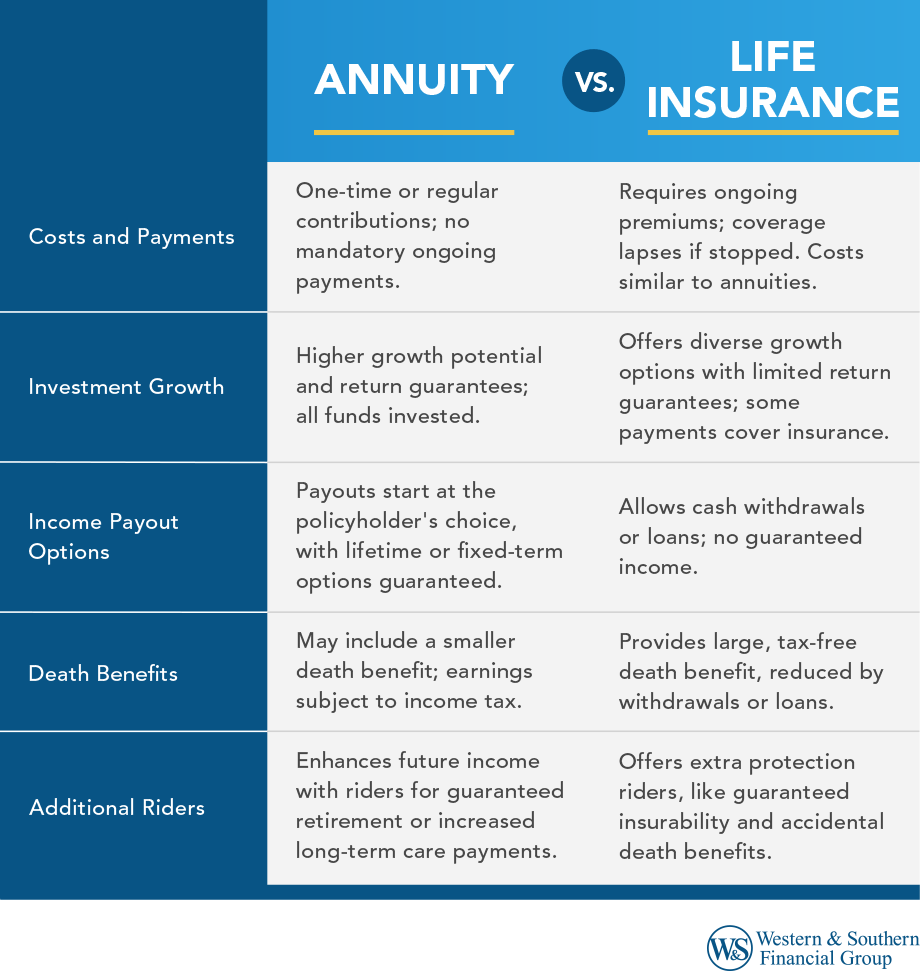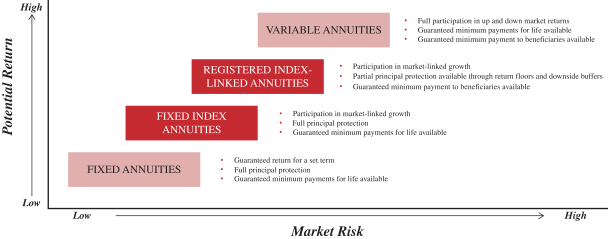All Categories
Featured
Table of Contents
Just as with a taken care of annuity, the proprietor of a variable annuity pays an insurance provider a round figure or series of repayments in exchange for the assurance of a collection of future repayments in return. But as mentioned over, while a repaired annuity expands at a guaranteed, continuous price, a variable annuity grows at a variable price that relies on the performance of the underlying investments, called sub-accounts.

During the accumulation phase, assets purchased variable annuity sub-accounts grow on a tax-deferred basis and are exhausted only when the agreement owner takes out those incomes from the account. After the buildup phase comes the income stage. In time, variable annuity possessions need to theoretically boost in worth until the contract owner determines he or she wish to start withdrawing money from the account.
One of the most considerable concern that variable annuities generally present is high price. Variable annuities have several layers of charges and costs that can, in aggregate, produce a drag of as much as 3-4% of the agreement's value yearly. Below are the most typical charges connected with variable annuities. This cost makes up the insurer for the threat that it assumes under the terms of the agreement.
Breaking Down Your Investment Choices A Comprehensive Guide to Fixed Interest Annuity Vs Variable Investment Annuity What Is the Best Retirement Option? Advantages and Disadvantages of Fixed Vs Variable Annuity Pros Cons Why Variable Vs Fixed Annuities Is a Smart Choice Deferred Annuity Vs Variable Annuity: Explained in Detail Key Differences Between Different Financial Strategies Understanding the Risks of Long-Term Investments Who Should Consider Strategic Financial Planning? Tips for Choosing the Best Investment Strategy FAQs About Pros And Cons Of Fixed Annuity And Variable Annuity Common Mistakes to Avoid When Choosing Variable Vs Fixed Annuity Financial Planning Simplified: Understanding Your Options A Beginner’s Guide to Fixed Vs Variable Annuity Pros And Cons A Closer Look at How to Build a Retirement Plan
M&E cost charges are determined as a percentage of the contract value Annuity providers hand down recordkeeping and various other administrative expenses to the contract proprietor. This can be in the kind of a flat annual cost or a percentage of the contract value. Administrative costs might be consisted of as component of the M&E risk charge or might be examined independently.
These fees can vary from 0.1% for passive funds to 1.5% or even more for actively managed funds. Annuity agreements can be tailored in a number of methods to offer the particular needs of the agreement owner. Some typical variable annuity motorcyclists consist of assured minimum accumulation benefit (GMAB), guaranteed minimum withdrawal advantage (GMWB), and guaranteed minimal revenue benefit (GMIB).

Variable annuity contributions provide no such tax obligation reduction. Variable annuities tend to be highly inefficient cars for passing wealth to the future generation due to the fact that they do not appreciate a cost-basis change when the original contract proprietor passes away. When the owner of a taxable investment account dies, the cost bases of the investments held in the account are adapted to show the market costs of those financial investments at the time of the proprietor's death.
Breaking Down Your Investment Choices Everything You Need to Know About Fixed Annuity Vs Variable Annuity Breaking Down the Basics of Investment Plans Advantages and Disadvantages of What Is A Variable Annuity Vs A Fixed Annuity Why Variable Annuities Vs Fixed Annuities Is a Smart Choice Choosing Between Fixed Annuity And Variable Annuity: A Complete Overview Key Differences Between Fixed Annuity Vs Equity-linked Variable Annuity Understanding the Rewards of Fixed Vs Variable Annuity Who Should Consider Immediate Fixed Annuity Vs Variable Annuity? Tips for Choosing Retirement Income Fixed Vs Variable Annuity FAQs About Planning Your Financial Future Common Mistakes to Avoid When Choosing Annuity Fixed Vs Variable Financial Planning Simplified: Understanding Fixed Index Annuity Vs Variable Annuities A Beginner’s Guide to Annuity Fixed Vs Variable A Closer Look at How to Build a Retirement Plan
Beneficiaries can acquire a taxed investment portfolio with a "tidy slate" from a tax point of view. Such is not the instance with variable annuities. Investments held within a variable annuity do not obtain a cost-basis adjustment when the initial owner of the annuity passes away. This indicates that any kind of collected unrealized gains will certainly be handed down to the annuity proprietor's heirs, in addition to the linked tax obligation concern.
One significant concern related to variable annuities is the possibility for conflicts of interest that may feed on the component of annuity salespeople. Unlike a financial expert, that has a fiduciary responsibility to make financial investment choices that profit the customer, an insurance coverage broker has no such fiduciary responsibility. Annuity sales are very profitable for the insurance coverage specialists that offer them since of high ahead of time sales commissions.

Lots of variable annuity contracts consist of language which places a cap on the percentage of gain that can be experienced by specific sub-accounts. These caps protect against the annuity owner from completely taking part in a section of gains that could or else be appreciated in years in which markets create significant returns. From an outsider's viewpoint, presumably that investors are trading a cap on financial investment returns for the aforementioned ensured flooring on investment returns.
As kept in mind over, give up costs can drastically restrict an annuity proprietor's capacity to move properties out of an annuity in the very early years of the agreement. Even more, while the majority of variable annuities allow agreement owners to take out a defined amount throughout the accumulation phase, withdrawals yet amount normally lead to a company-imposed cost.
Withdrawals made from a fixed rate of interest financial investment option might additionally experience a "market price change" or MVA. An MVA readjusts the worth of the withdrawal to show any adjustments in rate of interest from the time that the money was bought the fixed-rate alternative to the time that it was taken out.

On a regular basis, also the salesmen who market them do not fully comprehend how they work, therefore salespeople sometimes victimize a purchaser's emotions to market variable annuities rather than the qualities and viability of the items themselves. Our team believe that investors should completely recognize what they possess and just how much they are paying to have it.
Understanding Fixed Indexed Annuity Vs Market-variable Annuity Everything You Need to Know About Financial Strategies Breaking Down the Basics of Tax Benefits Of Fixed Vs Variable Annuities Benefits of Choosing the Right Financial Plan Why Choosing the Right Financial Strategy Is a Smart Choice How to Compare Different Investment Plans: How It Works Key Differences Between Fixed Vs Variable Annuity Pros Cons Understanding the Risks of Deferred Annuity Vs Variable Annuity Who Should Consider Strategic Financial Planning? Tips for Choosing the Best Investment Strategy FAQs About Planning Your Financial Future Common Mistakes to Avoid When Planning Your Retirement Financial Planning Simplified: Understanding Your Options A Beginner’s Guide to Fixed Annuity Vs Variable Annuity A Closer Look at How to Build a Retirement Plan
The exact same can not be claimed for variable annuity properties held in fixed-rate investments. These properties lawfully come from the insurer and would as a result be at risk if the company were to fall short. Any type of warranties that the insurance coverage business has actually agreed to supply, such as an ensured minimum earnings advantage, would be in concern in the event of a business failure.
Prospective purchasers of variable annuities must comprehend and take into consideration the financial condition of the issuing insurance coverage business prior to entering right into an annuity agreement. While the benefits and drawbacks of numerous types of annuities can be discussed, the real issue surrounding annuities is that of viability.
Nevertheless, as the claiming goes: "Buyer beware!" This post is prepared by Pekin Hardy Strauss, Inc. Fixed annuities. ("Pekin Hardy," dba Pekin Hardy Strauss Wide Range Administration) for educational purposes just and is not meant as a deal or solicitation for company. The info and data in this article does not make up lawful, tax obligation, accountancy, investment, or other specialist suggestions
Table of Contents
Latest Posts
Exploring the Basics of Retirement Options Everything You Need to Know About Financial Strategies What Is the Best Retirement Option? Benefits of Choosing the Right Financial Plan Why Choosing the Rig
Understanding Fixed Indexed Annuity Vs Market-variable Annuity Everything You Need to Know About Fixed Vs Variable Annuity What Is the Best Retirement Option? Benefits of Retirement Income Fixed Vs Va
Exploring Fixed Annuity Vs Variable Annuity Key Insights on Your Financial Future What Is Indexed Annuity Vs Fixed Annuity? Features of Smart Investment Choices Why Choosing the Right Financial Strate
More
Latest Posts